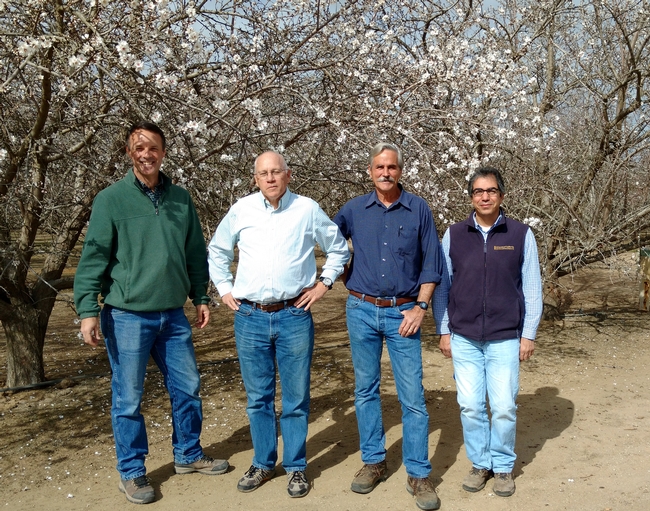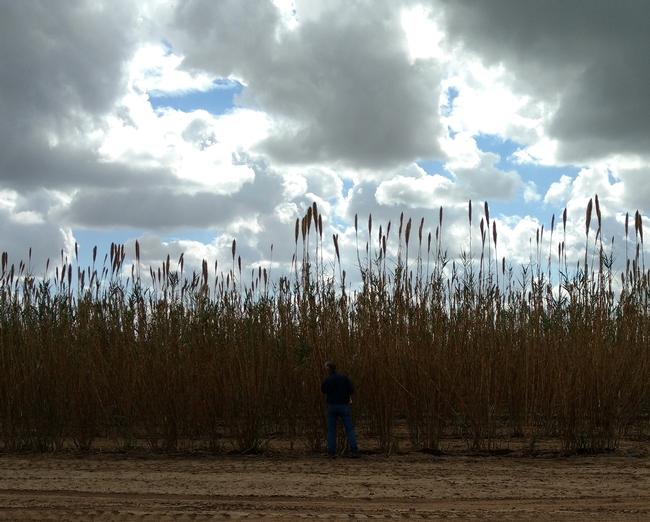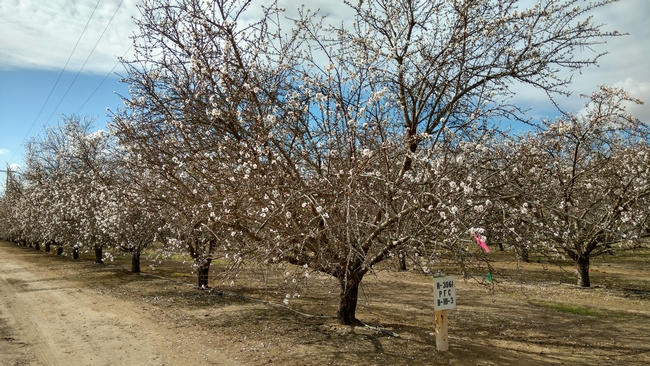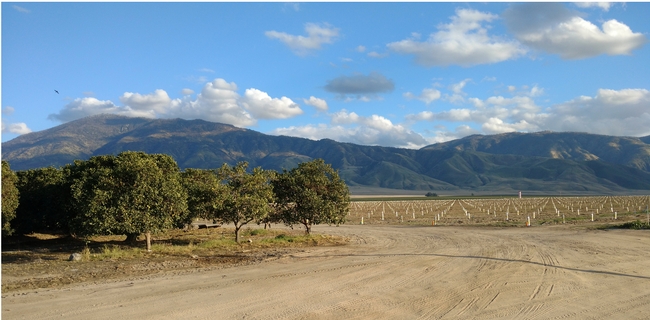It's hard to find enough time these days to keep up on the essential things so some of you might be wondering how I justify taking time and incurring the expense to visit our facilities around the state. It's because I consider it essential to my role and one of my key responsibilities to convey the work going on. Seeing the work, as opposed to just hearing it, gives me context. I learn far more through the conversations than what might result from a meeting sitting in Davis or Oakland.
On Monday, Mark Bell and I spent the day with the group in Kern County. The day went far too quickly and we didn't have time for one-on-one conversations with all of the academics, much less the staff. Things are so different from where they were a year ago. Despite what seems to have been a warmer winter, the trees didn't seem to be as far in bloom as they were last year. And, of course, it is much drier. At this time last year, I recall driving back from World Ag Expo knowing that there were evacuations of dairy farms underway.
I learned a bunch of things while visiting the group in Kern County, from high tech approaches to mating disruption, to creative approaches to averting fumigant use, to UC ANR's impact on developing evapotranspiration models. All was impressive and fascinating. And clearly the group works with colleagues across the state on all of these efforts, despite being tucked away far from just about everywhere. David's mating disruption work involves a cadre of Advisors all the way up to Butte and Mohammed readily referred to Brent's orchard recycling efforts are the driver behind his own research. Blake talked at length about his collaborations with Allan Fulton.

I was fascinated by the Giant cane plot we visited. While not your usual plot study, it's a crop that is really important to musicians that play woodwind reed instruments. Two of my sisters, including the fencer, played double reed instruments (oboe and bassoon) and another sister played clarinet and saxophone (single reed). I also played saxophone and I think the fencer played it as well. If you have played reed instruments you know how important a good reed is to sound quality. What I had managed to forget was how expensive reeds are - $12 and up for an oboe reed on Amazon! Brian shared that manufacturers employ the likes of Kenny G to test out reed quality. Imagine the opportunity we have to connect a new clientele group with importance of agriculture!

We ended our day at what David calls his happy place. It's a four corner intersection, still in the middle of nowhere, with a different crop on each corner. And each corner demonstrates the impact that the work of UC ANR has. One corner was a citrus orchard where glassy-winged sharpshooter control was deployed in order to spare the vineyard across the road from becoming infected with Pierce's Disease. Kiddy-corner to the vineyard were cherry trees demonstrating the gains made from all of the Spotted Wing Drosophila work that went on years ago. And opposite the cherry trees were high-bush blueberries, one of the highest value crops.
It made for a long night and I didn't catch up on emails until this evening but it was great to see just a small slice of what UCCE Kern County is up to. I can't wait to be invited back.

